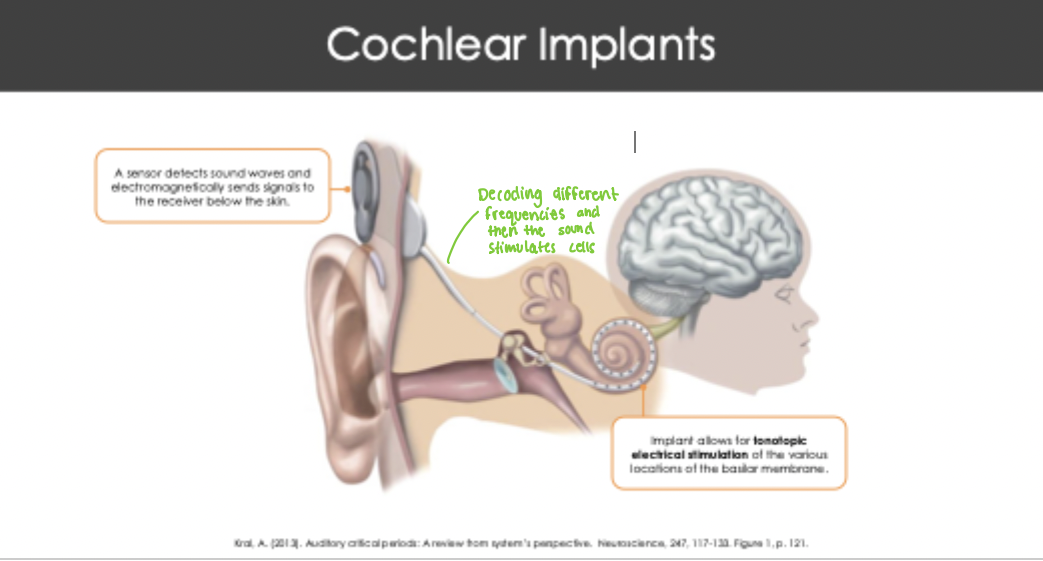Audition & The Vestibular Sense
1/51
There's no tags or description
Looks like no tags are added yet.
Name | Mastery | Learn | Test | Matching | Spaced |
|---|
No study sessions yet.
52 Terms
Amplitude
The amplitude of a sound wave is its intensity
Sounds of greater amplitude seem louder, but a rapidly talking person seems louder than slow music of the same amplitude
Frequency and Pitch
Frequency of sound is the number of compressions per second measured in hertz
Pitch is the related aspect of perception
Sounds higher in frequency are higher in pitch
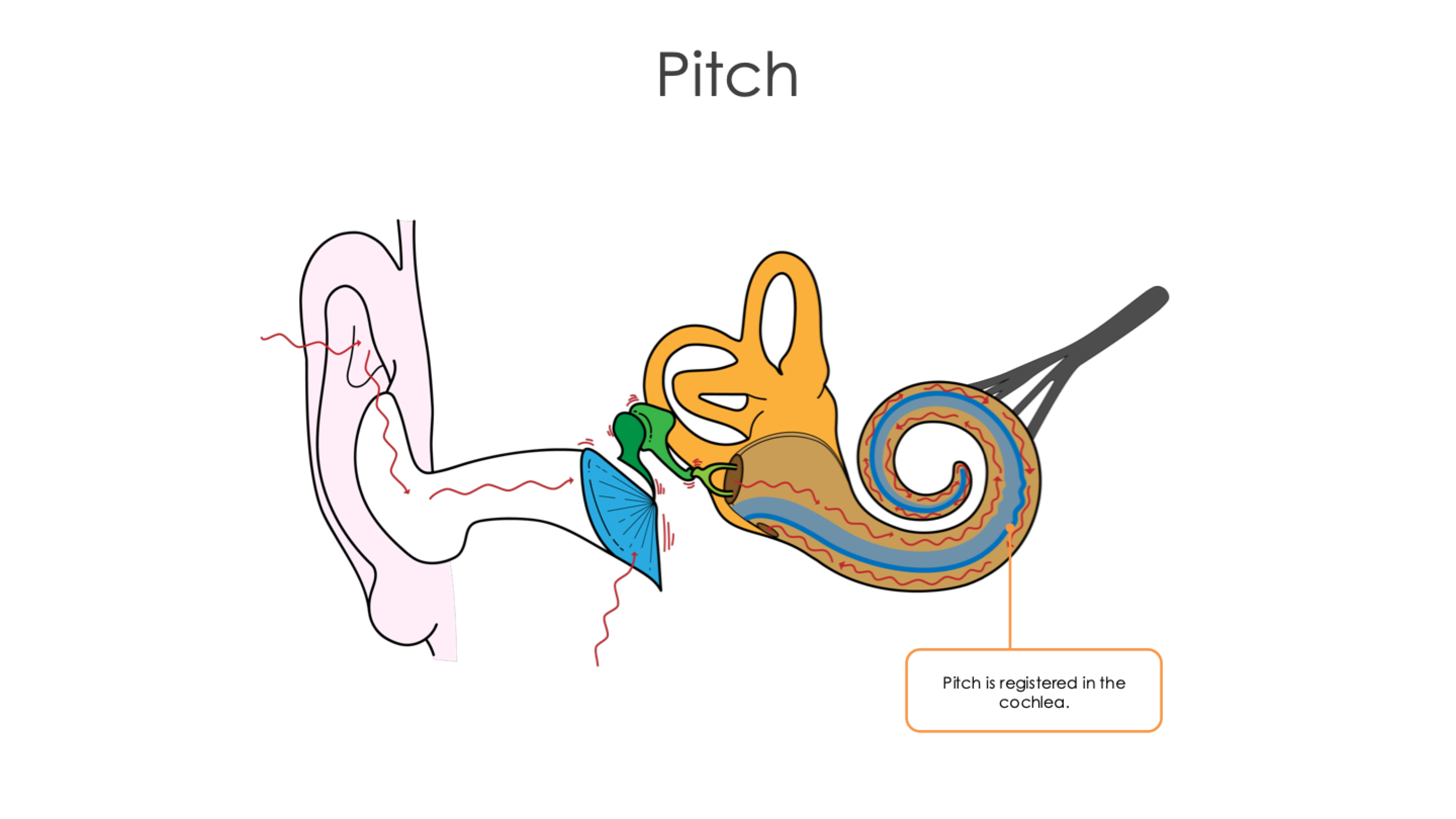
True or False: Most adult humans hear sounds from about 15 to 20 Hz up to almost 20,000 Hz
True
True or False: Children hear higher frequencies, because the ability to perceive high frequencies decreases with age and exposure to loud noises
True
Timbre
The third aspect of sound (amplitude, pitch, and timbre)
Tone quality or tone complexity
Different musical instruments playing the same note sound different, as do people singing the same note
Prosody
Conveying emotional information by tone of voice
Example: “that was interesting” could indicate approval (it actually was interesting), sarcasm (it was really boring), or suspicion (you think someone was hinting something)
What is in the Outer Ear?
the pinna
Pinna (The Outer Ear)
Pinna: the familiar structure of flesh and cartilage attached to each side of the head
The pinna helps locate the source of a sound by altering the reflections of sound waves
We have to learn to use this information because all pinnas are shaped differently
Where do sound waves pass through?
Sound waves pass through the auditory canal, enter the middle ear
Middle ear, structure that had to be evolved when ancient fish evolved into land animals.
Because animal tissues respond to water vibrations almost the same way that water itself does, fish have relatively simple hearing receptors that would not respond well to vibrations in the air
True or False: The structures of the outer ear and middle ear evolved to amplify sound vibrations
False
The structures of the middle ear and inner ear evolved to amplify sound vibrations
Middle Ear
When sound waves reach the middle ear, they vibrate the tympanic membrane, or eardrum
Tympanic Membrane or Eardrum
The tympanic membrane connects to three tiny bones that transmit the vibrations to the oval window, a membrane of the inner ear.
The Smallest Bones in the Body
Are sometimes known by their
English names: hammer, anvil, and stirrup
Latin names: malleus, incus and stapes
What happens in the hydraulic pump?
The vibrations of the tympanic membrane amplify into more forceful vibrations of the smaller stirrup, converting sound waves into waves of greater pressure on the oval window
When the stirrup vibrates the oval window, it sets into motion the fluid in the….
Cochlea
Cochlea
The snail-shaped structure of the inner ear
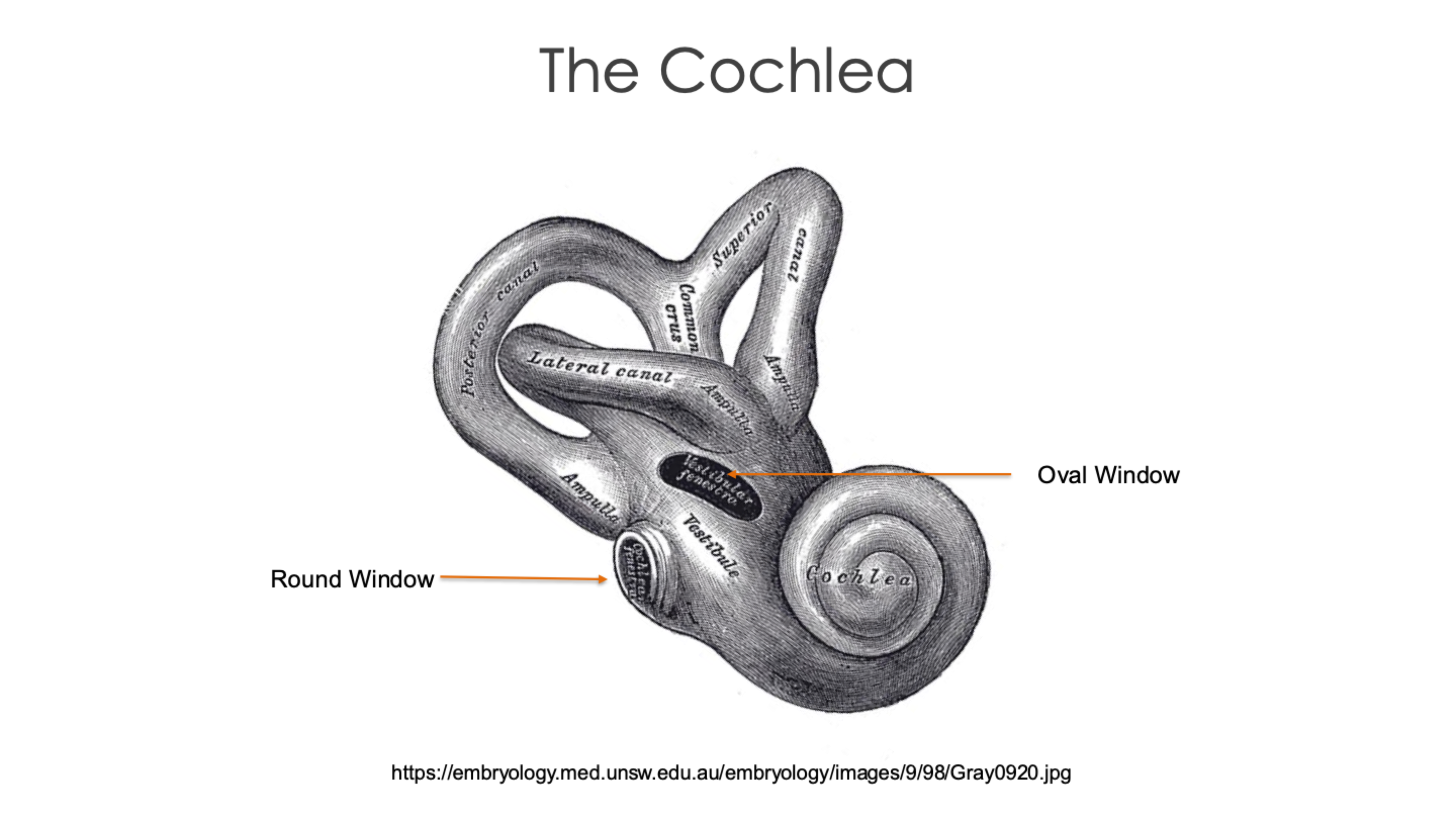
Hair cells
Also known as auditory receptors
Lie along the basilar membrane of the cochlea
Cilia
Not all cilia are the same height
They move back and forth by vibration
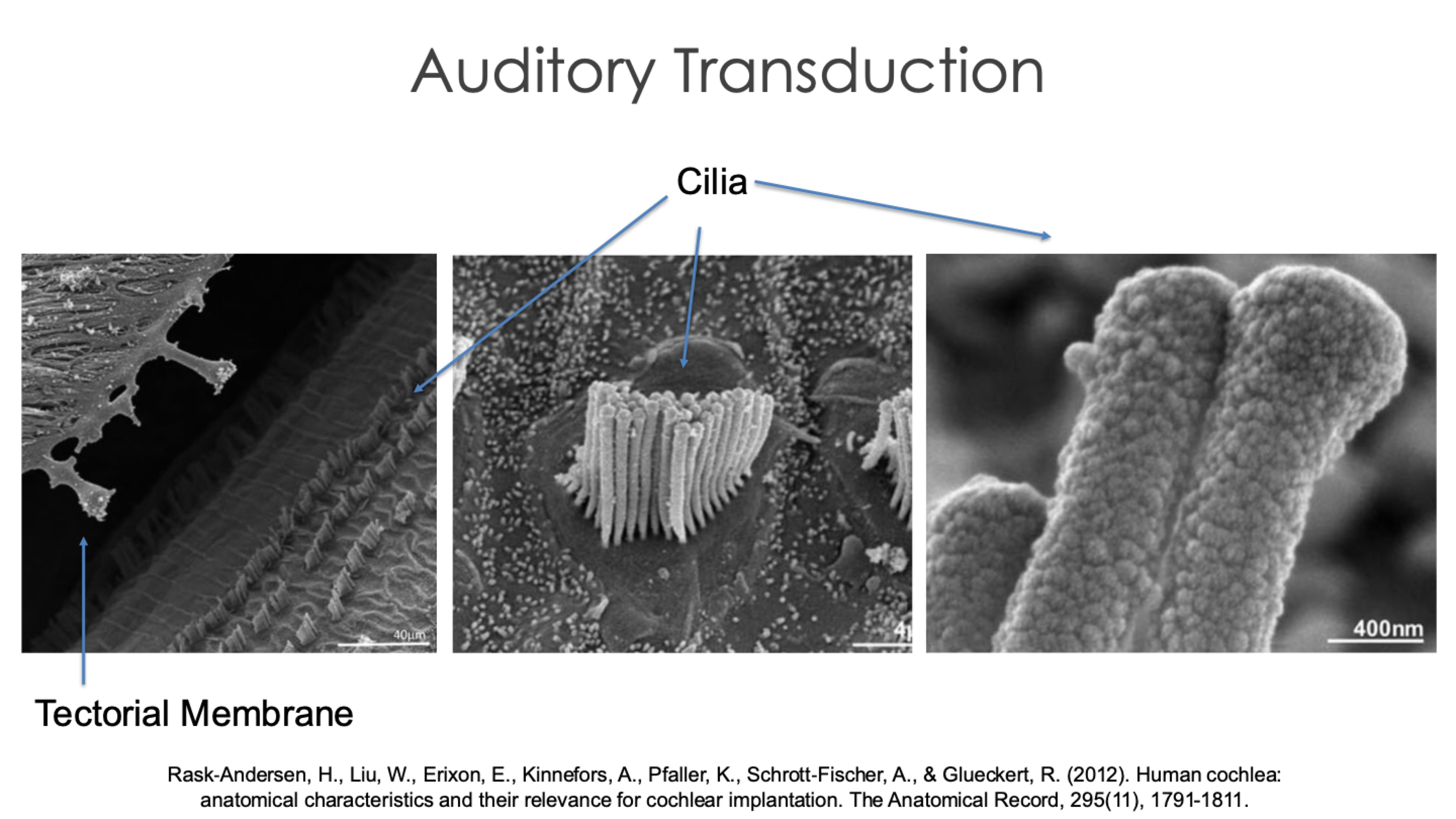
What are cilia jointed by?
Tip links
Tip Link Function

Tip Link (Increased tension on tip link)
We slowed things and made vibration come in. Now we’re going to let the fluid flow back.
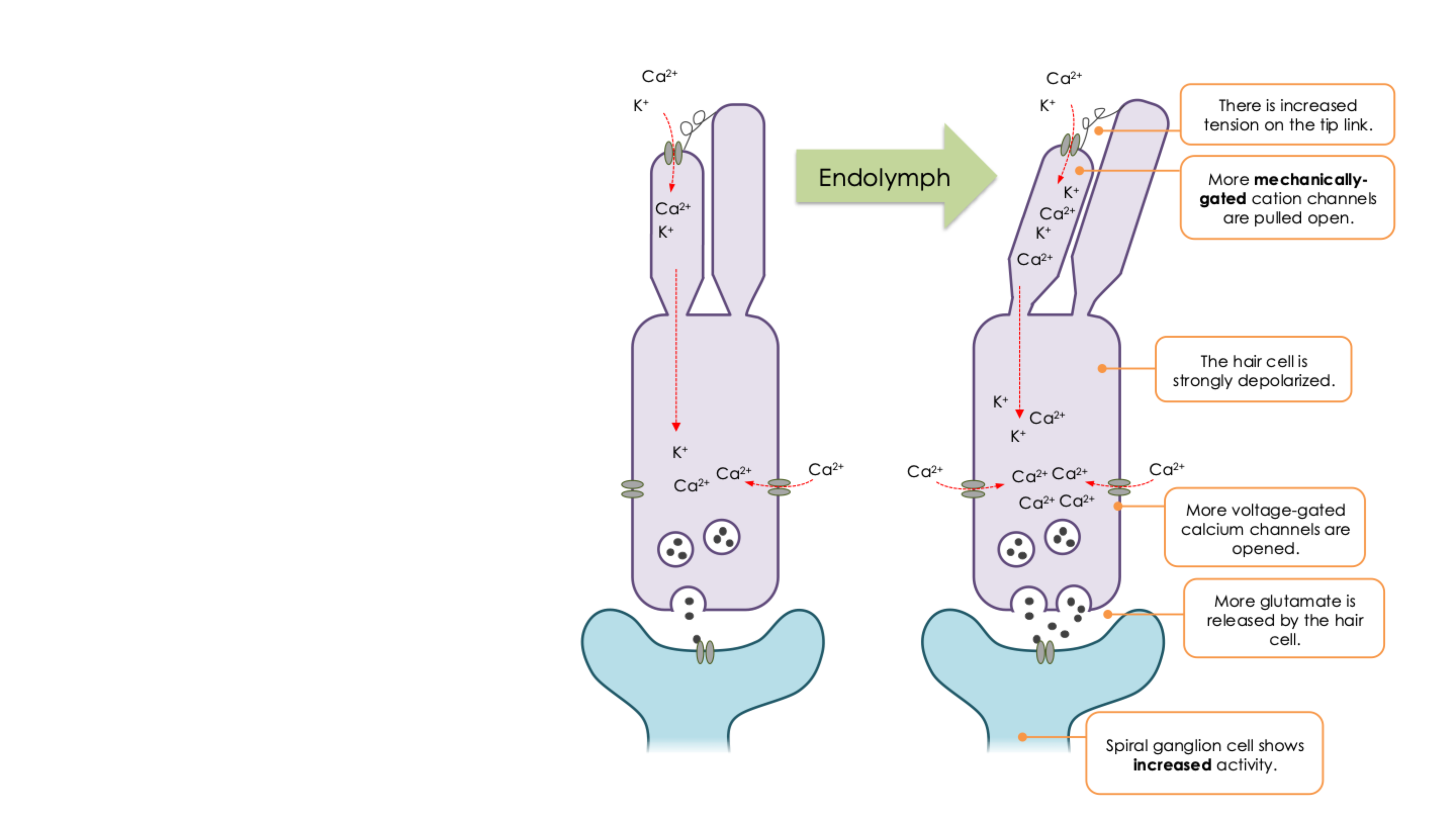
Tip Link (Decreased tension on tip link)
You move the tips closer together
Not many potassium (K+) channels open
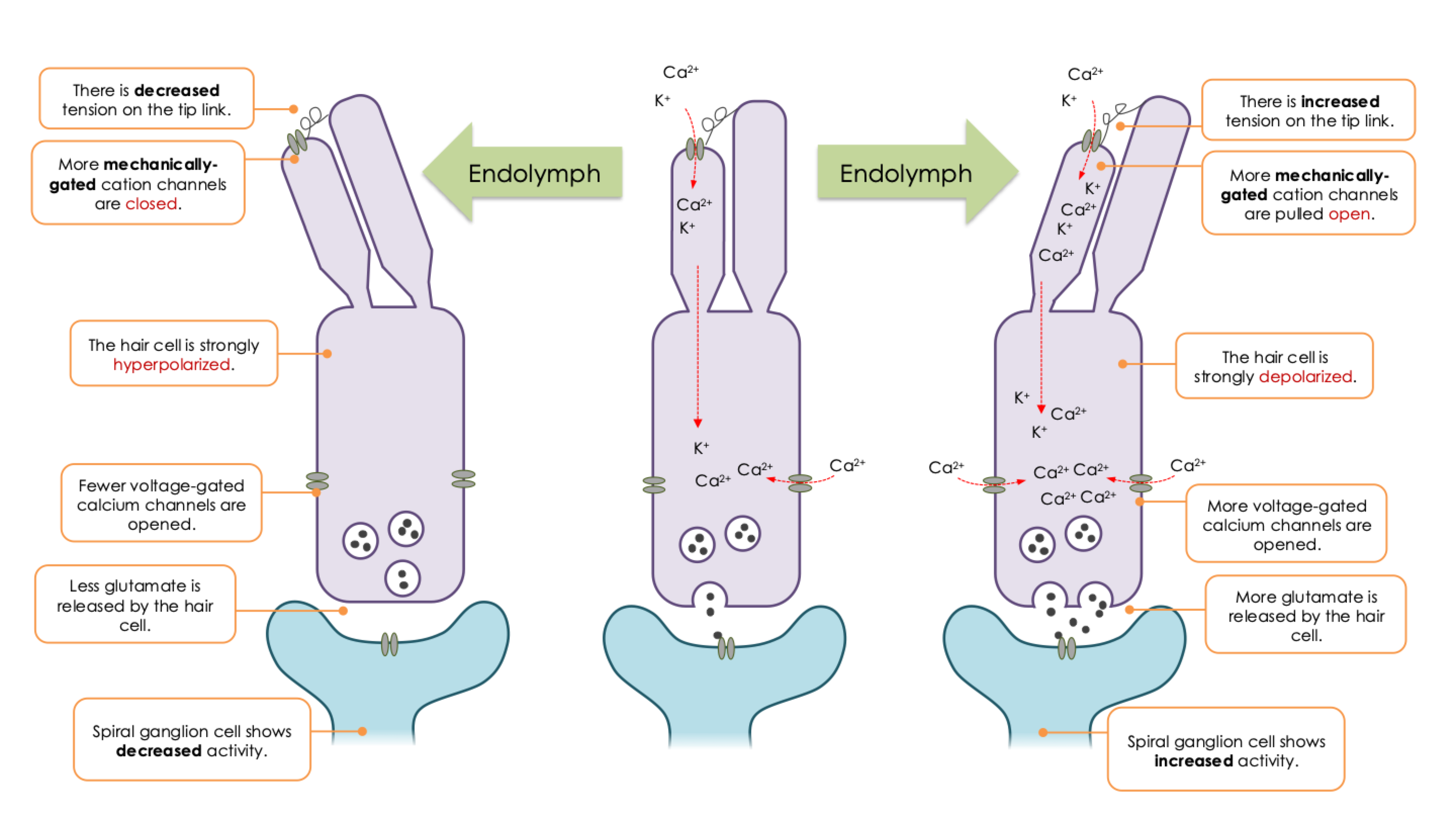
Vibrations in the fluid of the cochlea displace the hair cells, stimulate which part of the ear?
The auditory nerve
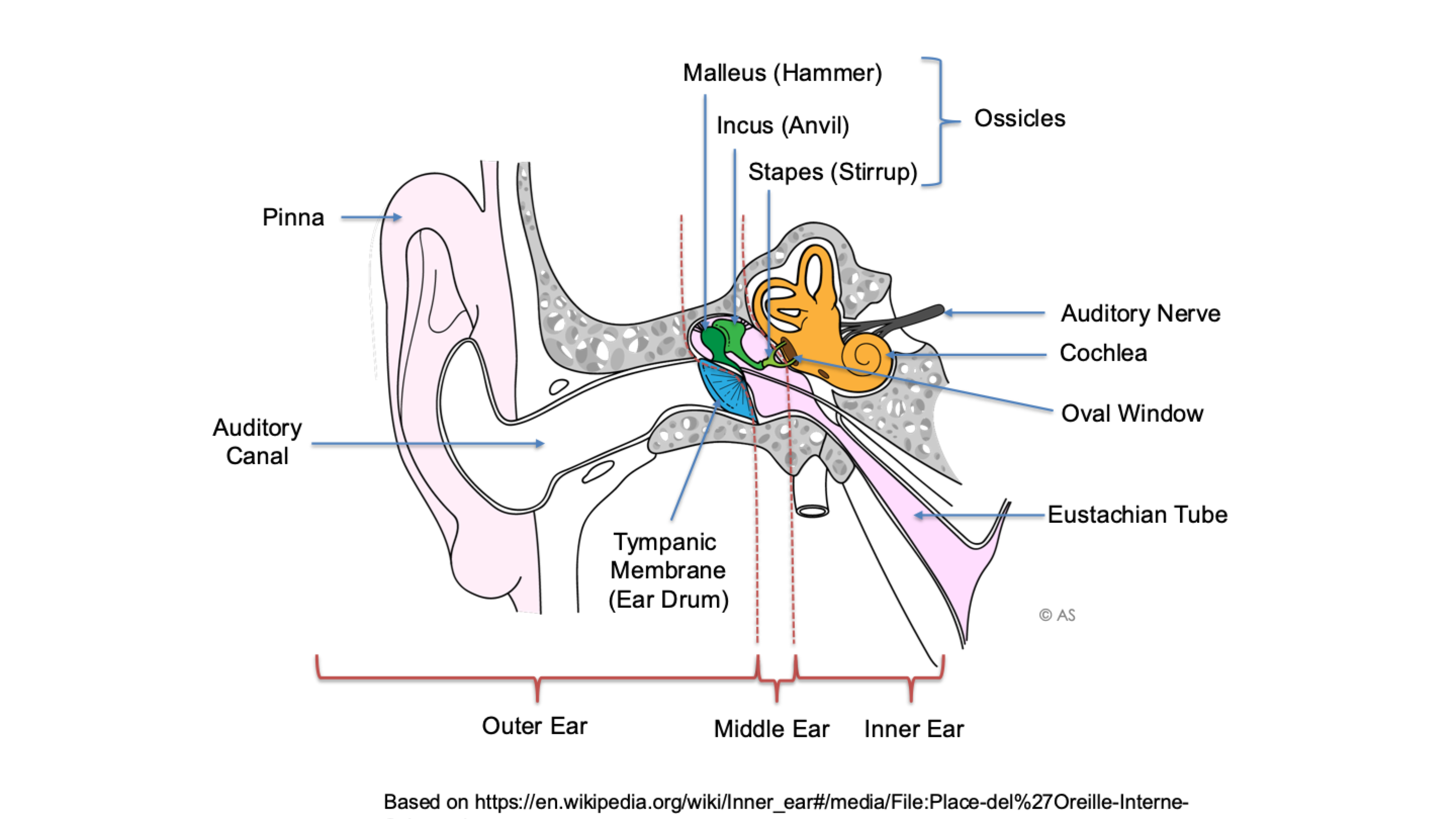
What are the 3 canals or ducts in the cochlea?
Vestibular Canal
Tympanic Canal
Cochlear Duct
Vestibular Canal (Scala Vestibuli)
Contains perilymph
Tympanic Canal (Scala Tympani)
Contains perilymph
Cochlear Duct (Scala Media)
Contains endolymph
The Process of the Ear
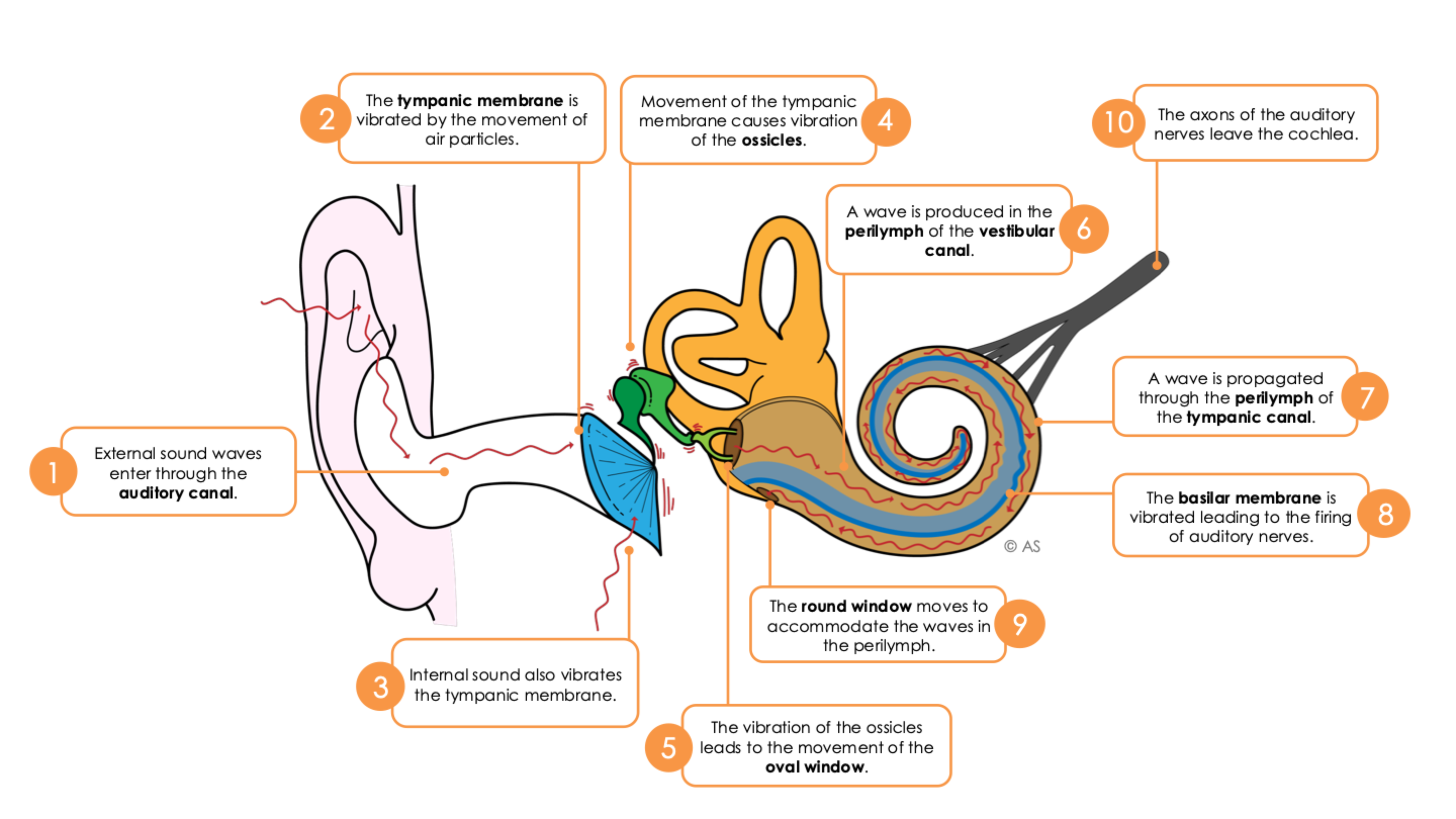
How many mechanisms does the auditory system use and what are they?
Two mechanisms
Frequency Theory
Place Theory
Frequency Theory
The basilar membrane vibrates in synchrony with sound waves, causing auditory nerve axons to produce action potentials at the same frequency
Example: a sound at 50 Hz would cause 50 action potentials per second in the auditory nerve
The downfall of this theory in its simplest form is that the refractory period limits the maximum firing rate of any neuron to about 1000 Hz, far short of the highest frequencies we hear
Fill in the Blanks: A soft tone stimulates ________ neurons for each peak of the sound wave, and louder tones stimulate __________ ________ of them
A soft tone stimulates fewer neurons for each peak of the sound wave, and louder tones stimulate progressively more of them
Place Theory (Old)
This theory suggested that the basilar membrane resembles the strings of a piano
If you sound a note with a tuning fork near a piano, you vibrate the piano string tuned to that note. However, the parts of the basilar membrane are bound together too tightly for any part to resonate like a piano string
Place Theory (Modified Version)
The basilar membrane varies from stiff at its base, where the stirrup meets the cochlea, to floppy at the other end of the cochlea, the apex
A high-pitched sound sound sets up a traveling wave that peaks sharply at some point along the basilar membrane. The point at which it peaks it identifies the frequency of the sound
Low frequency sounds vibrate hair cells near the apex
High frequency sounds vibrate hair cells farther toward the base
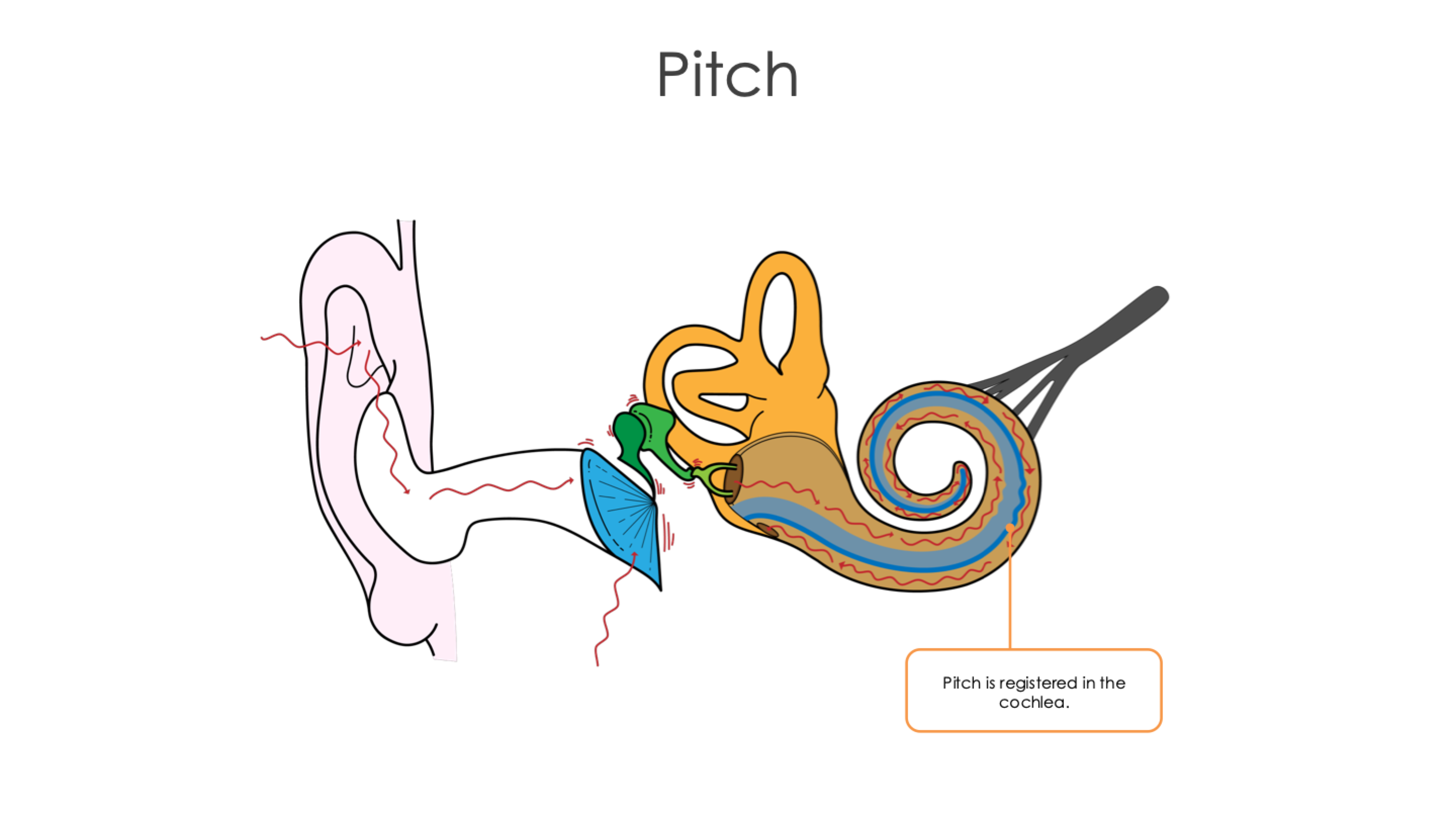
Timing Theory

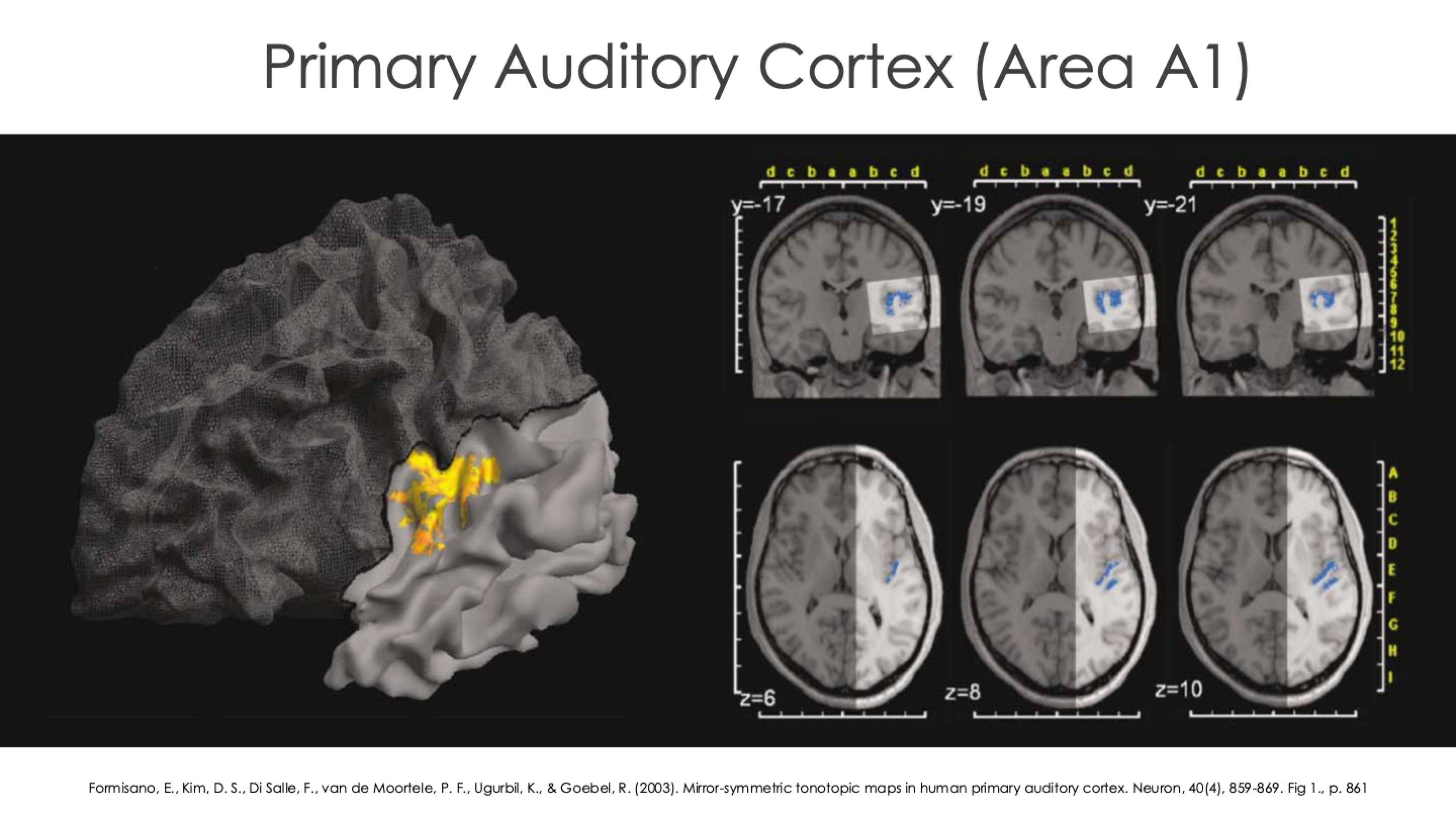
The Auditory Cortex (Area A1)
As information from the auditory system passes through subcortical areas, axons cross over in the midbrain to enable each hemisphere of the forebrain to get most of the its input, but not all of it from the opposite ear. The information ultimately reaches the primary auditory cortex (area A1)
Diagram: Information from One Ear to Both Sides
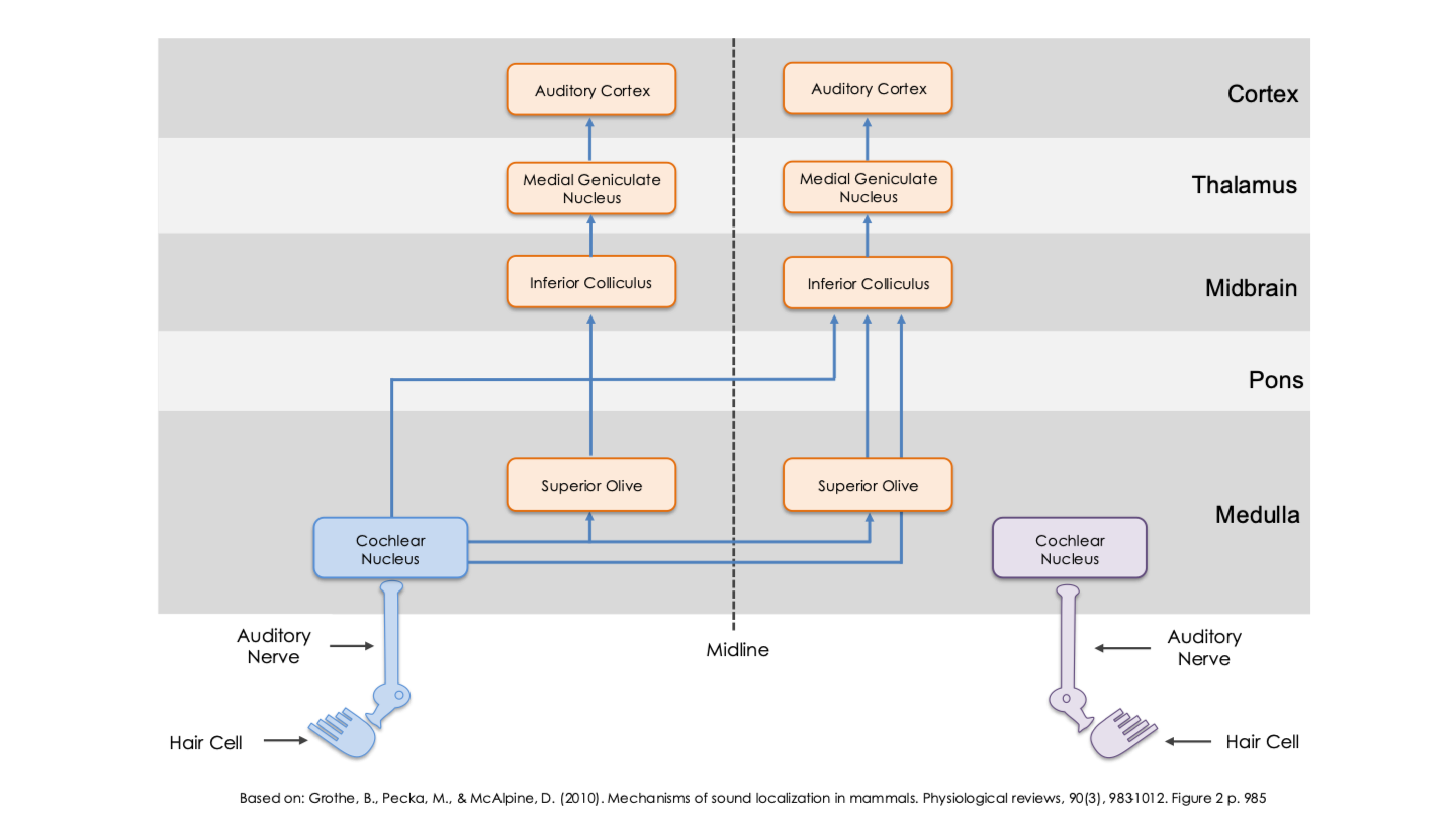
What area in the temporal cortex processes the experience you have of sound source moving from one place to another?
Planum Temporale
The area is connected to the MT which processes visual motion
The connection helps you combine visual and auditory information to locate some things accurately
Tonotopic Map
When researchers record from cells in the primary auditory cortex while playing pure tones, they find that most cells have a preferred tone. The auditory cortex provides what researchers call a tonotopic map of sounds.
Sound Localization
You compare the responses of your 2 years to locate a sound. You compare the times of arrival at the 2 ears. A sound coming directly from the side reaches your closer ear about 600 microseconds (us) before the other (varying by the size of your head)
Interaural Time Difference (ITD)
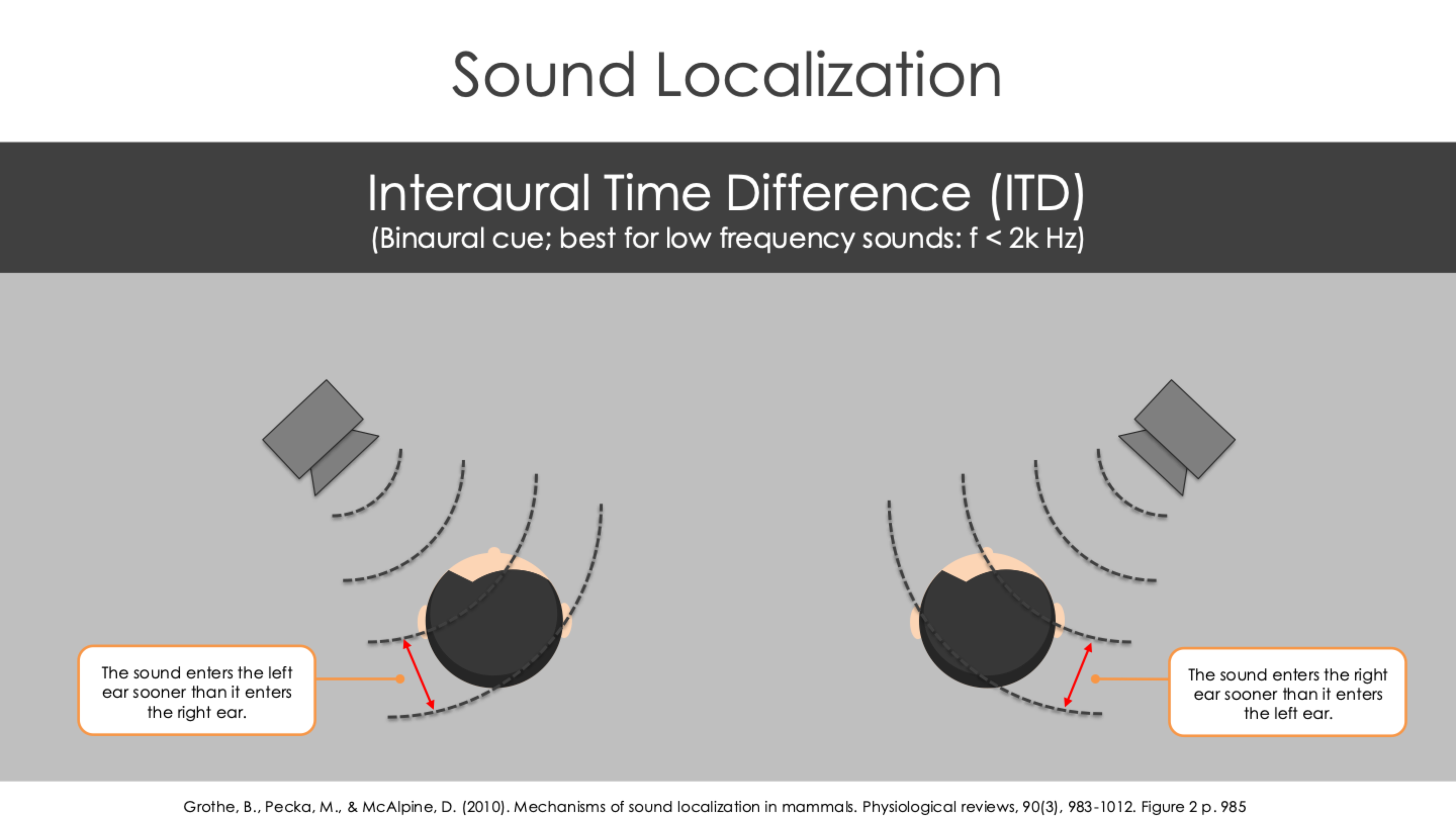
Interaural Level Difference (ILD)
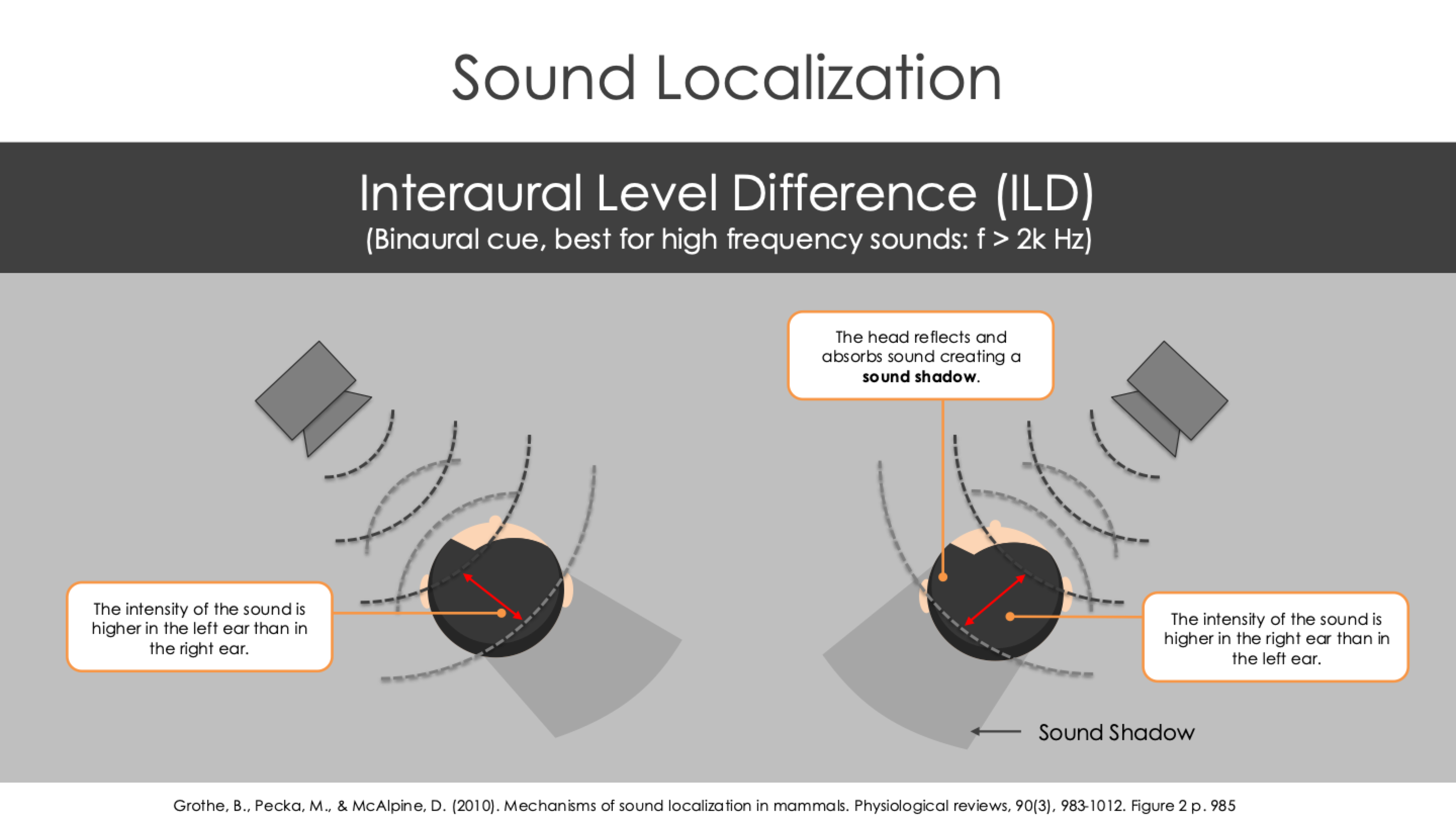
Limits of ITD and ILD
Sound reaches both ears at the same time and with the same loudness
Spectral Notches (Monaural Cue)
Sounds hitting the outer ear from different vertical positions end up with unique spectral notches
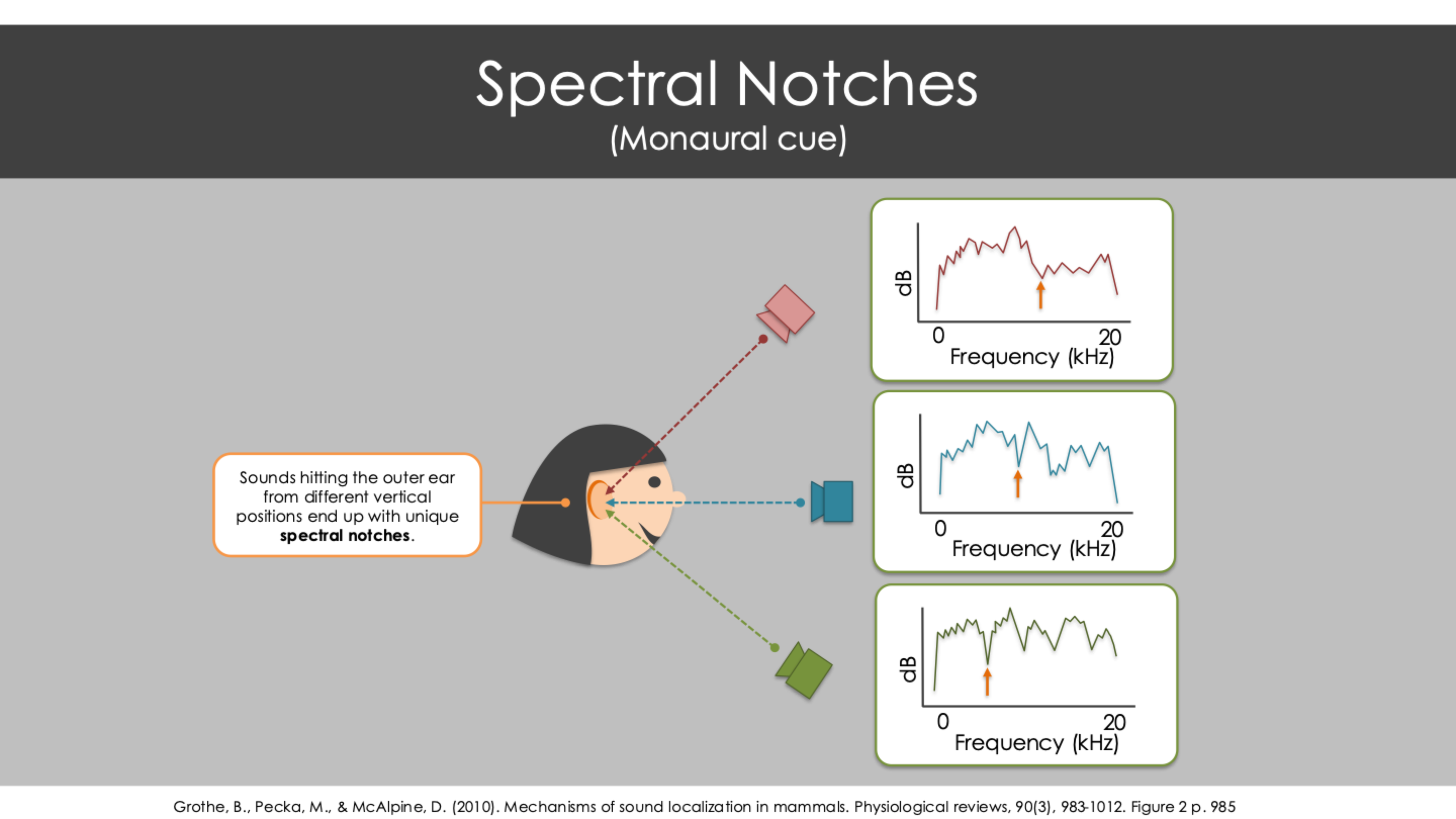
Diagram: ITD and ILD
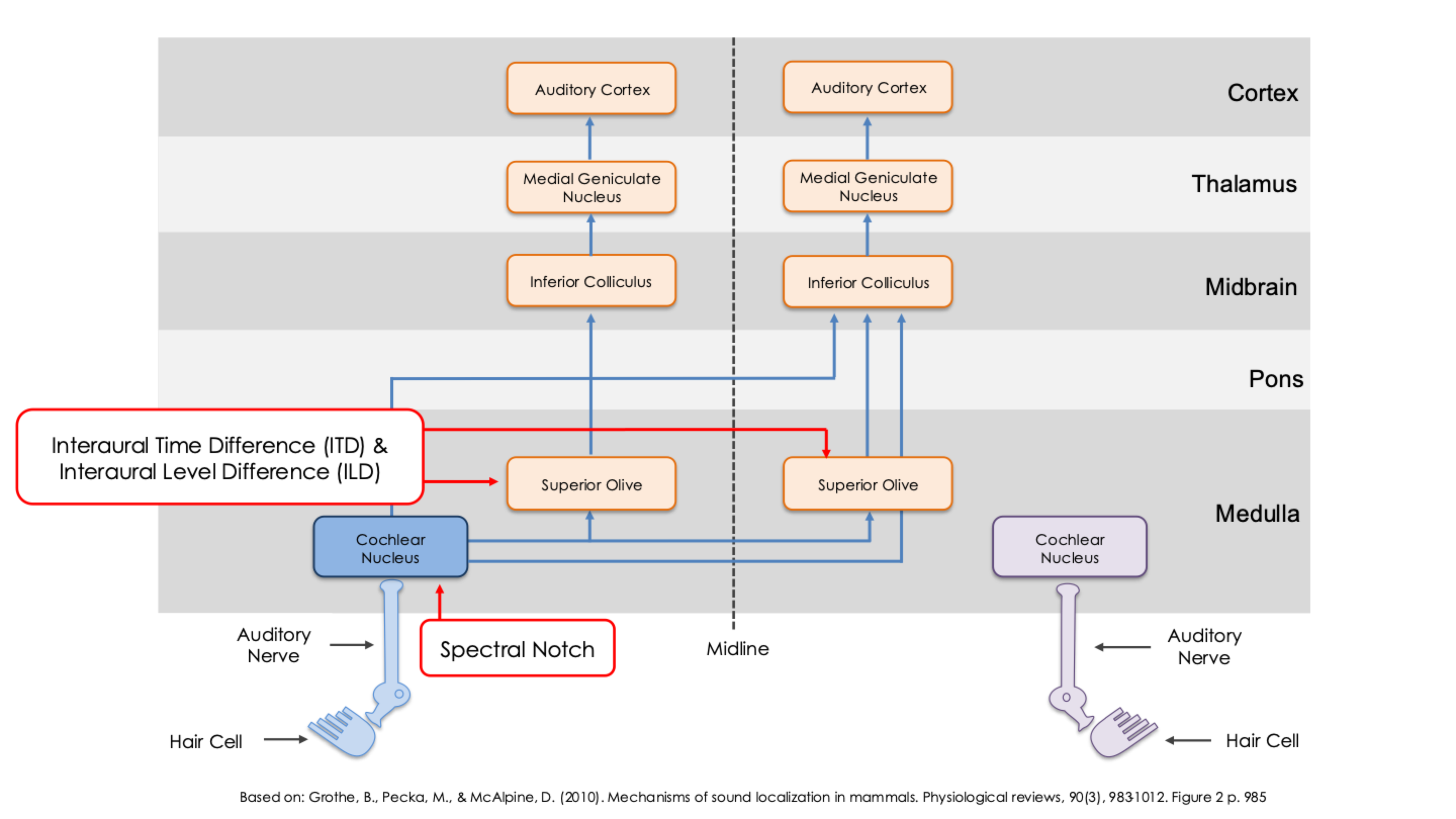
What does your head create when you hear high-frequency sounds, with a wavelength shorter than the width of the head which makes the sound louder for the closer ear?
Sound Shadow
Phase Difference
If a sound originates to the side of the head, the sound wave strikes the 2 ears out of phase. How much out of the phase depends on the frequency of the sound, the size of the head, and the direction of the sound.
Phase differences provide information that is useful for localizing sounds with frequencies up to about 1500 Hz in humans.
How many people have amusia?
Amusia is tone deafness; 4%
For people with amuisa they have less than the average connections to the frontal cortex
What are the 2 categories of hearing loss?
Conductive deafness
Nerve Deafness
Conductive Deafness or Middle-ear Deafness
Sometimes temporary
If it persists can be corrected with surgery or hearing aids
Because people with conductive deafness have a normal cochlea and auditory nerve, they readily hear their own voices, conducted through the bones of the skull directly to the cochlea, bypassing the middle ear. Because they hear themselves clearly, they may accuse others of talking too softly.
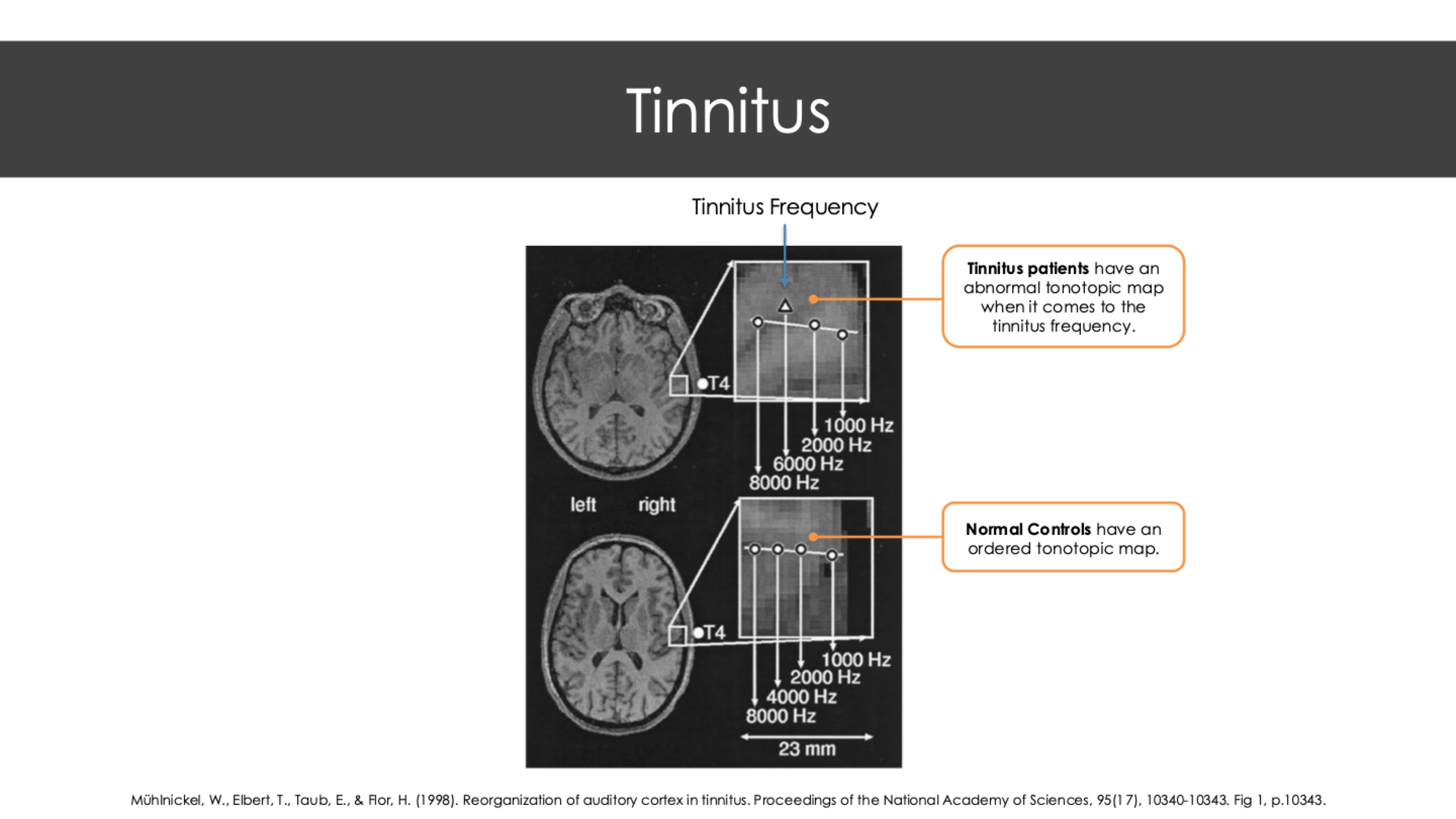
Nerve Deafness, or Inner-ear Deafness
Occurs because of damage to cochlea, hair cells, or auditory nerve
Confined to one part of the cochlea, it impairs hearing of certain frequencies and not others
Can be inherited, result from a disease, or from exposure to loud noises
Tinnitus
Constant ringing in the ears (something is stimulating the cells which make your ears ring)
Common in people who have lost their hearing but rare in people with life-long deafness
Resembles phantom limb in some cases
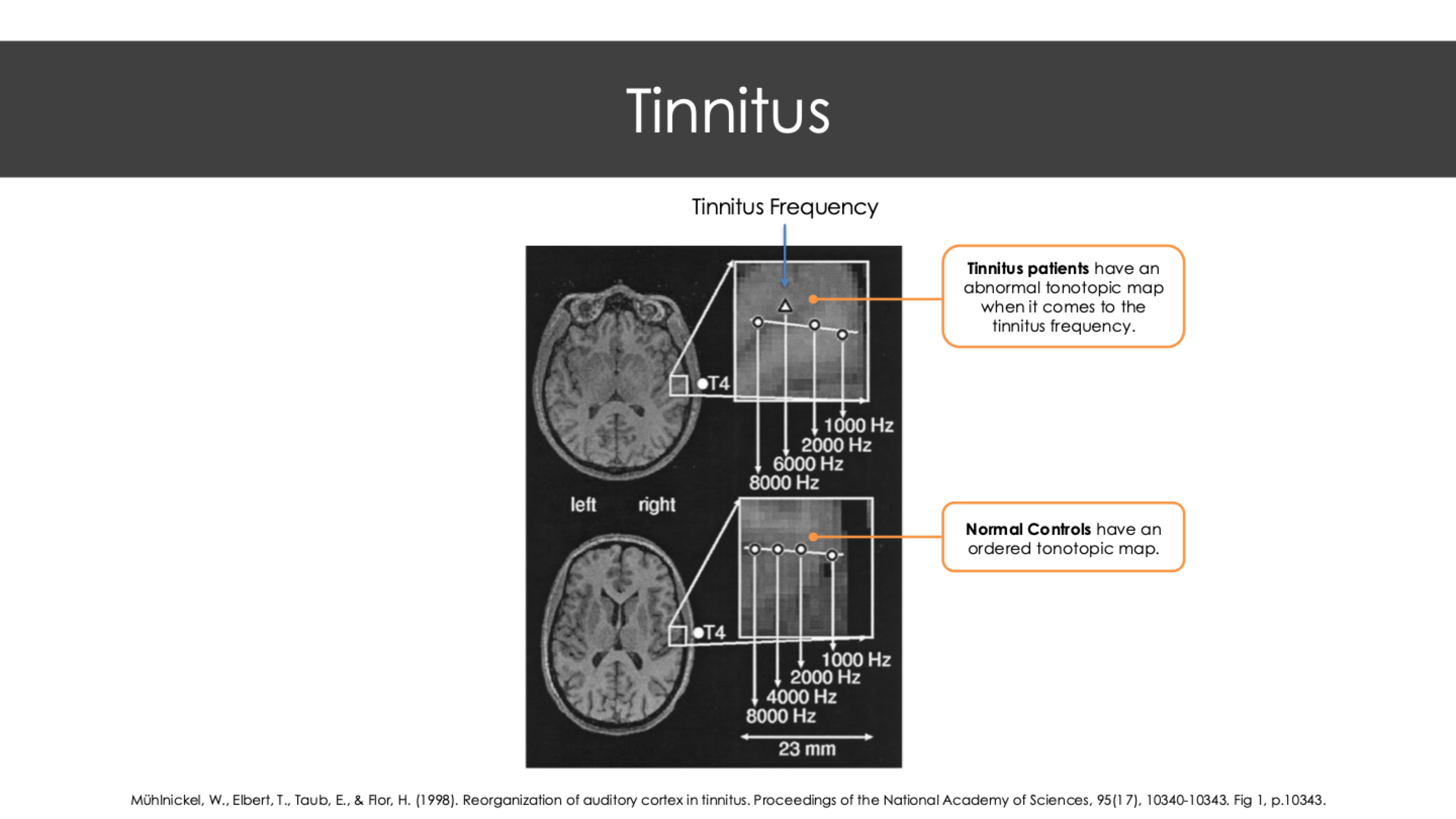
Cochlear Implants
A sensor detects sound waves and electromagnetically sends signals to the receiver below the skin
Implant allows for tonotopic electrical stimulation of the various locations of the basilar membrane
